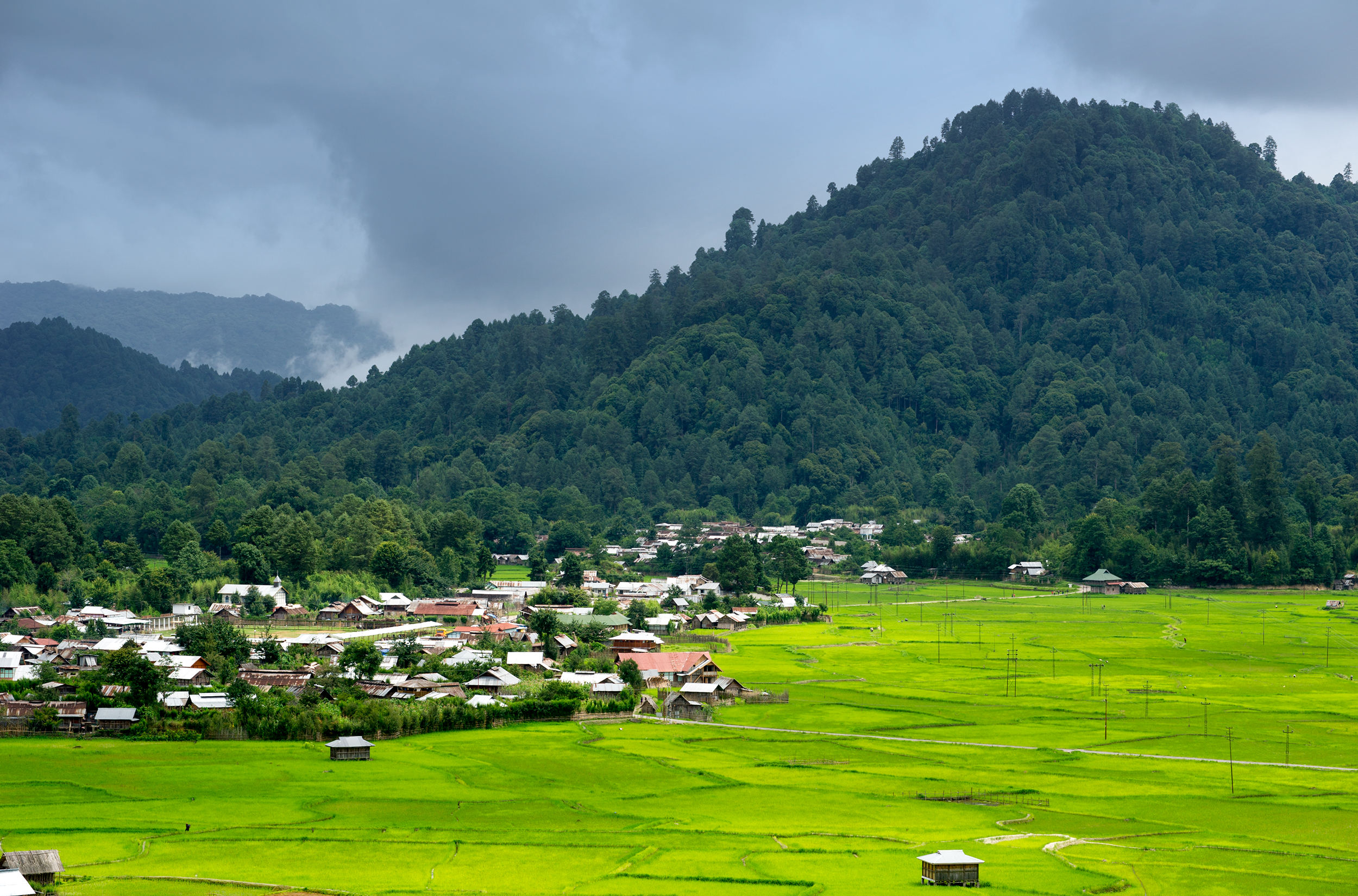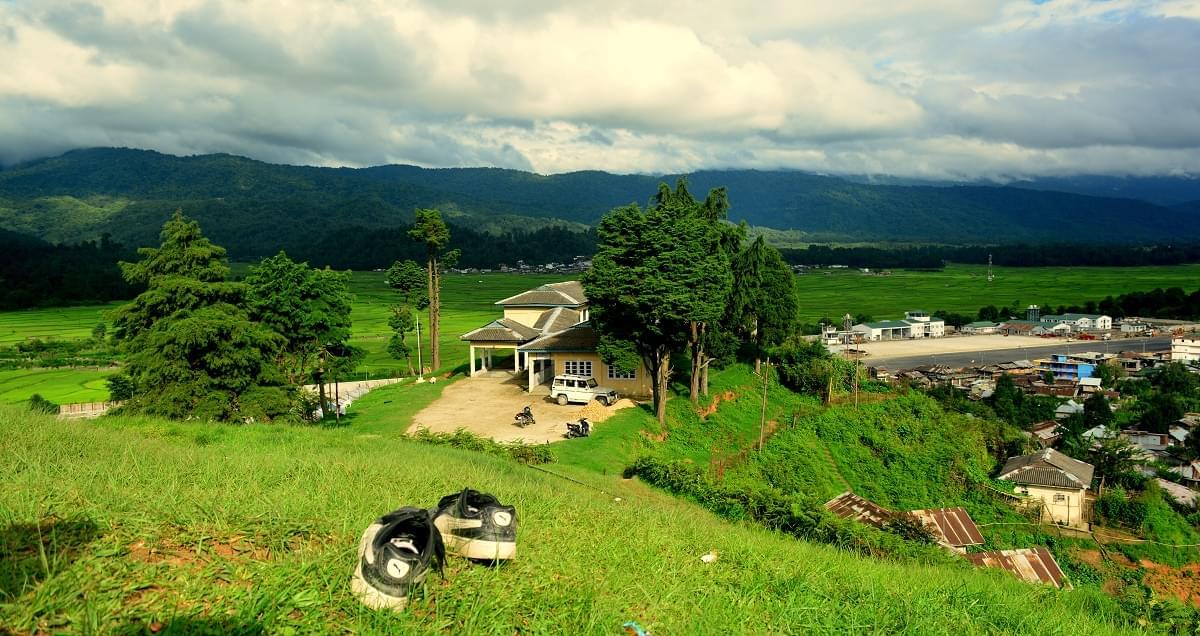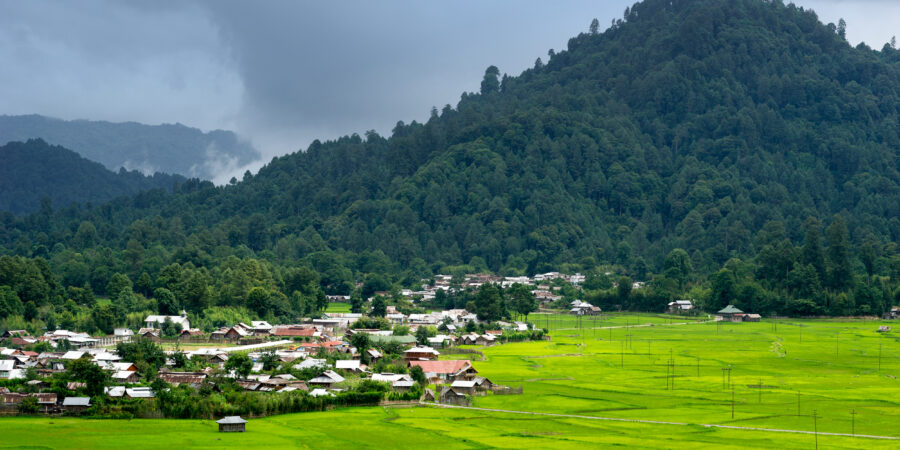 Snuggled in the picturesque mountains of Arunachal Pradesh, India’s easternmost state, lies a hidden gem known as Ziro Village. Tucked away from the chaos of city life, Ziro is a serene and enchanting place that showcases the beauty of nature, the richness of indigenous cultures, and the warmth of its people. With its verdant landscapes, ancient traditions, and vibrant festivals, Ziro Village offers visitors a unique and immersive experience in the heart of the Eastern Himalayas.
Snuggled in the picturesque mountains of Arunachal Pradesh, India’s easternmost state, lies a hidden gem known as Ziro Village. Tucked away from the chaos of city life, Ziro is a serene and enchanting place that showcases the beauty of nature, the richness of indigenous cultures, and the warmth of its people. With its verdant landscapes, ancient traditions, and vibrant festivals, Ziro Village offers visitors a unique and immersive experience in the heart of the Eastern Himalayas.
Located in the Lower Subansiri district of Arunachal Pradesh, Ziro Village is approximately 5,000 feet above sea level. Surrounded by mist-covered mountains, lush green forests, and terraced rice fields, the village is a paradise for nature enthusiasts and adventure seekers. The mesmerizing beauty of the landscape, coupled with its pleasant weather throughout the year, makes Ziro a captivating destination for travelers.
One of the most striking features of Ziro Village is its vibrant indigenous culture. The Apatani tribe, the main inhabitants of Ziro, have preserved their age-old traditions and rituals, which are deeply rooted in their connection with nature. The Apatani people are known for their sustainable agricultural practices, with the intricate rice cultivation system being the backbone of their community.
The unique aspect of the Apatani farming system is the practice of wetland cultivation, also known as paddy-cum-fish culture. The villagers construct terraced fields irrigated using a complex network of bamboo pipes and channels. These paddy fields yield abundant rice and serve as fish farms, where a harmonious relationship is maintained between the cultivation of crops and the breeding of fish. Witnessing the Apatani farmers meticulously tending to their fields is a remarkable sight that showcases their deep understanding of nature’s balance.
Apart from agriculture, the Apatani people are renowned for their intricate handloom weaving and bamboo crafts. Visitors to Ziro Village can witness local artisans’ skillful weaving of traditional textiles and intricate bamboo baskets. These crafts serve as a means of livelihood and as a link to their cultural heritage, which is passed down through generations.
Ziro Village also offers many trekking and hiking opportunities for adventure enthusiasts. The surrounding mountains provide numerous trails that lead to breathtaking viewpoints and secluded villages. The trek to Talley Valley Wildlife Sanctuary, a biodiversity hotspot, is popular among nature lovers. Exploring the dense forests, spotting exotic flora and fauna, and camping under the starry skies make for an unforgettable experience in Ziro.
The cultural vibrancy of Ziro Village comes to life during the Ziro Music Festival, held annually in September. This four-day extravaganza brings together artists, musicians, and performers across the country and beyond. Against the mesmerizing Ziro landscape, attendees can immerse themselves in a fusion of music genres, from traditional folk to contemporary rock, while indulging in local cuisine and interacting with the friendly locals. The Ziro Music Festival has gained international recognition for its unique atmosphere and celebration of diversity.
For those seeking spiritual solace, Ziro Village is home to ancient and revered temples. The Kile Pakho, a sacred stone structure, and the Dolo Mando temple are important religious sites where visitors can experience the tranquil spirituality of the region. These temples serve as a reminder of the deep-rooted faith and cultural significance that permeate every aspect of life in Ziro.
Hospitality is a way of life in Ziro Village, and the locals welcome visitors with open arms. Staying in homestays, traditional bamboo huts, or eco-lodges is a popular choice, providing an authentic experience of living in harmony with nature and the local community. Sharing meals with the villagers, listening to their stories, and partaking in traditional festivals create memories that will last a lifetime.
The Ziro people are a tribe of the Tani group, indigenous to the Ziro valley in the Indian state of Arunachal Pradesh. The Ziro tribe is divided into four sub-groups – the Apatani, the Hruso, the Mishmi, and the Nyishi. The Ziro people are known for their unique customs and traditions, and their way of life has been largely untouched by modernization. The Ziro people are subsistence farmers, and their primary crops are rice, maize, and millet. The Ziro people are also skilled craftspeople, and their hand-woven textiles and woodcarvings are highly prized. The Ziro people are friendly and hospitable, and visitors to their village are always made to feel welcome. The Ziro people are proud of their culture and traditions and are happy to share them with others.
 As the world becomes more connected and urbanized, Ziro Village is a sanctuary of natural beauty and cultural heritage. It is a testament to the resilience of indigenous communities and the importance of preserving our roots. A visit to Ziro Village is not just a journey into the heart of the Eastern Himalayas but also an opportunity to reconnect with nature, immerse oneself in diverse cultures, and appreciate the simplicity and beauty of a life in harmony with the land.
As the world becomes more connected and urbanized, Ziro Village is a sanctuary of natural beauty and cultural heritage. It is a testament to the resilience of indigenous communities and the importance of preserving our roots. A visit to Ziro Village is not just a journey into the heart of the Eastern Himalayas but also an opportunity to reconnect with nature, immerse oneself in diverse cultures, and appreciate the simplicity and beauty of a life in harmony with the land.
The flora and fauna of Ziro village are simply amazing. The village is home to various rare and endangered plants and animals. The forests of Ziro are home to some of the rarest and most endangered species of animals in the world. The red panda, snow leopard, musk deer, and Himalayan black bear are some rare animals found in the forests of Ziro.
The Himalayan mountains are also home to various rare and endangered plants. Some rare and endangered plants found in the Himalayan mountains include the blue poppy, Himalayan balsam, and the Himalayan cedar.
The Apatani Tribe is known for its unique culture and traditions. The tribe is known for its use of traditional methods of agriculture. The Apatani Tribe is also known for its unique way of life. The tribe has its own unique language and culture. The Apatani Tribe is also known for its unique way of dress. The women of the tribe wear a distinctive type of clothing known as the ‘Tirband.’ The men of the tribe wear a traditional type of clothing known as the ‘Dohar.’
The Apatani Tribe is also known for its unique system of agriculture. The Apatani Tribe is known for its use of the ‘jhum’ or ‘slash and burn’ method of agriculture. This method of agriculture is very labor intensive and is only used in areas with a shortage of land.
Arunachal Pradesh is a state in northeastern India. It is the largest state in the Northeastern Region and the 18th largest state in India. Ziro is a village in the Ziro Valley of the Lower Subansiri district in the Indian state of Arunachal Pradesh. The valley is about 5,000 feet (1,500 m) above mean sea level.
The climate of Ziro is temperate, with cool winters and mild to warm summers. The average temperature ranges from 15 to 20 °C in winter and 25 to 30 °C in summer. The average annual rainfall is about 1,500 mm. The vegetation of Ziro is mainly composed of evergreen and deciduous forests. The major tree species found in the area are oak, pine, fir, spruce, and hemlock. The area is also home to various animals, including tigers, leopards, bears, elephants, and rhinoceros.
Ultimately, the Ziro Valley is a beautiful place to visit and is home to some of the most beautiful scenery in India. The valley is also home to several wildlife sanctuaries and national parks, which make it a perfect place for nature lovers and bird watchers.


